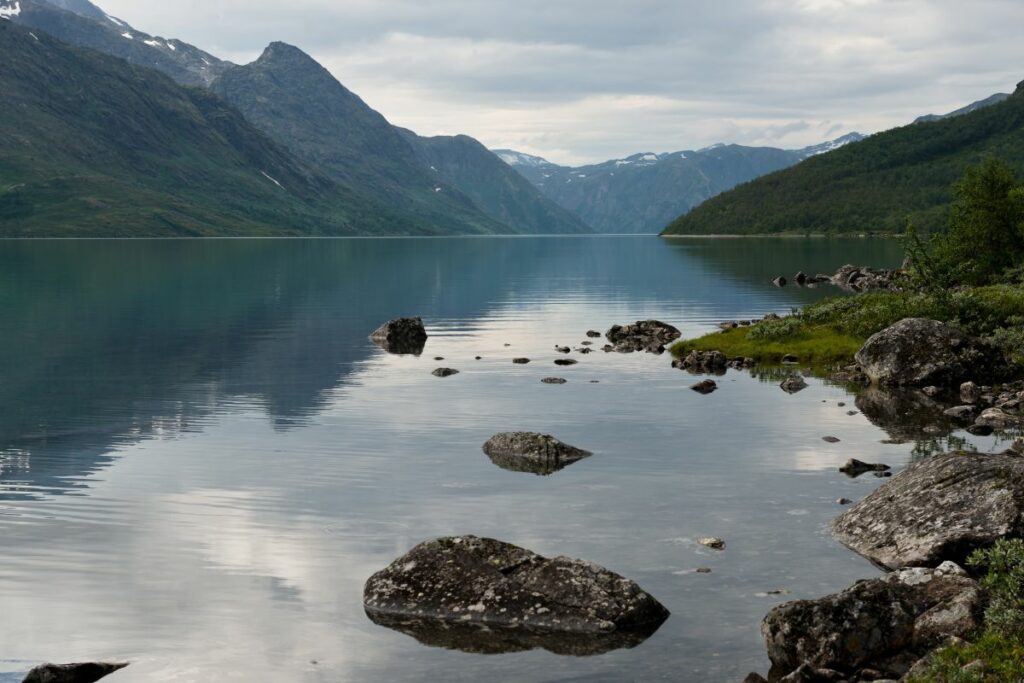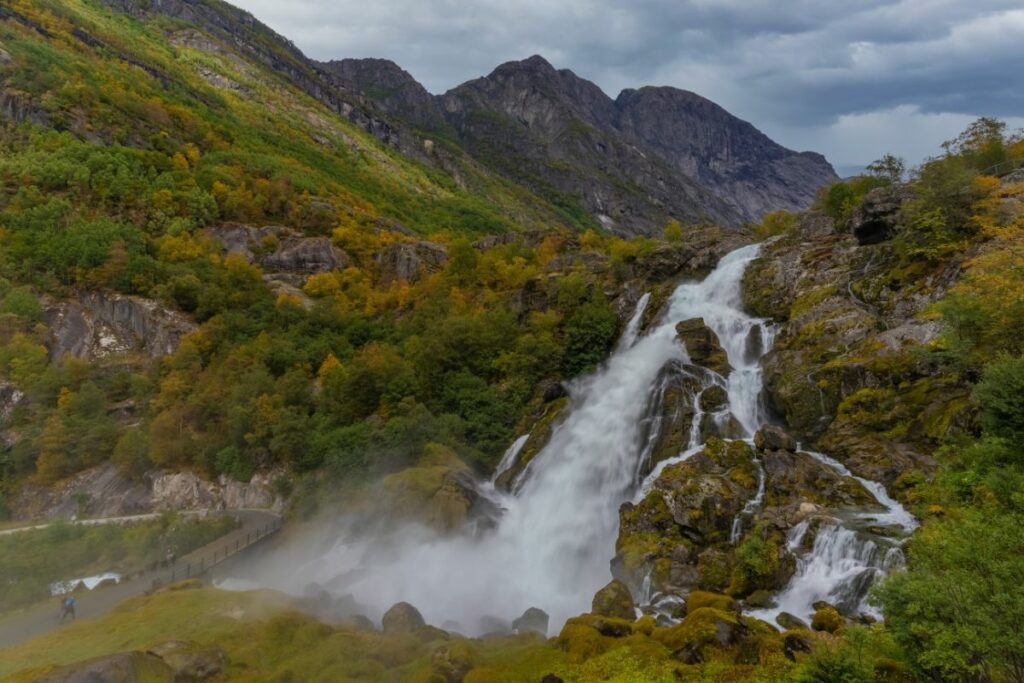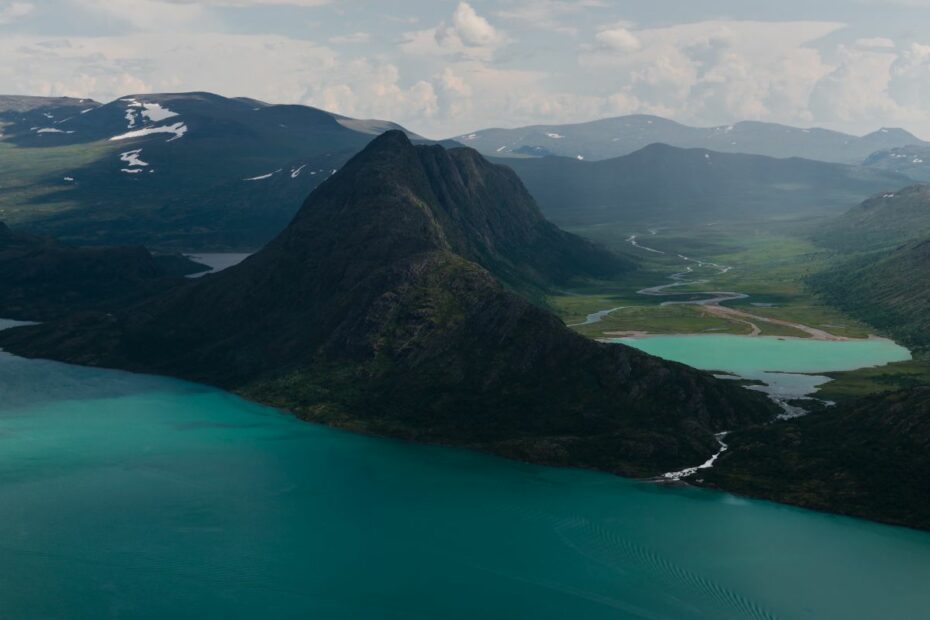National parks form the staple diet of any adventurous traveler. These beautiful, highly protected regions often showcase the best of a country’s natural beauty, so they’re always worth adding to your itinerary when visiting somewhere new.
If Norway is on your travel radar, you won’t be disappointed by its catalog of national parks, home to some of the most breathtaking views in Scandinavia. Here are three of Norway’s most popular and extraordinary national parks to add to your travel bucket list.
Jotunheimen National Park

Jotunheimen National Park, often called the “Home of the Giants” in Norway, is a remarkable natural sanctuary boasting Scandinavia’s tallest peak, Galdhøpiggen. Renowned for its majestic landscapes and rich cultural history, the park is a paradise for outdoor enthusiasts, offering diverse activities, including hiking, skiing, and wildlife watching.
National Park in Norway is in the heart of the country, encompassing a vast area between Oslo, Bergen, and Trondheim. This expansive park, covering about 3,500 square kilometers, is mountainous, offering a landscape filled with peaks, glaciers, and valleys.
Its uniqueness stems from its diverse topography and rich mythology. It features a landscape of over 250 high peaks and deep valleys, including the towering Galdhøpiggen and Glittertind. Its pristine nature, cultural heritage, and wide range of outdoor adventures make Jotunheimen a distinct and captivating destination in Norway’s wild heart.
The best time to visit this Norway National Park depends on the activities you’re interested in. Summer, particularly July and August, is ideal for hiking, with trails like Besseggen being the most accessible. This period offers long daylight hours and warmer temperatures. For winter sports enthusiasts, the snowy months from December to April provide excellent conditions for skiing and snowshoeing.
Besides hiking and winter sports, you can enjoy scenic drives like the Sognefjell Road and horse trekking at Jotunheimen National Park. The area is ideal for glacier walking and rock climbing, offering challenging and beginner-friendly routes. Popular hiking trails include the picturesque Bukkelægret and the panoramic Bitihorn.
Visitors can also explore the unique flora and fauna, indulge in local Norwegian cuisine, and enjoy the stunning views of the Northern Lights during certain times of the year.
Related: Best hikes in Europe.
Jostedalsbreen National Park

Jostedalsbreen National Park, often hailed as a crown jewel of Norway’s natural landscapes, is a breathtaking expanse of wilderness in the heart of the country. It is renowned for housing the largest glacier on the European mainland, the Jostedalsbreen Glacier, a remarkable natural wonder that has shaped the region’s geography and cultural history.
Strategically positioned between Oslo, Bergen, and Trondheim, Jostedalsbreen National Park is a testament to Norway’s diverse topography. The park lies in Vestland County, encompassing parts of the municipalities of Luster, Sogndal, Gloppen, Sunnfjord, and Stryn. This geographical diversity is mirrored in the park’s landscape, dominated by the massive Jostedalsbreen Glacier, which covers around 800 square kilometers of the park.
The park’s primary allure is the Jostedalsbreen Glacier itself. This colossal ice mass is a visual marvel and a crucial environmental resource, holding vast amounts of fresh water. The glacier and surrounding terrain uniquely blend natural beauty, ecological significance, and cultural heritage.
The best time to visit Jostedalsbreen National Park largely depends on the activities in which visitors are interested. The summer months, particularly from June to September, are ideal for exploring the glaciers, hiking in the valleys, and enjoying the flora and fauna. For those interested in winter sports like skiing, the colder months from December to March offer a snowy wonderland.
Activities and Attractions
- Glacier Hiking and Skiing: The Jostedalsbreen Glacier provides excellent opportunities for guided glacier hikes and skiing adventures.
- Water Sports: The park’s rivers and lakes offer kayaking and rafting experiences.
- Ice Cave Exploration: Guided tours to the blue ice caves beneath the Nigardsbreen Glacier offer a glimpse into an otherworldly frozen landscape.
- Cultural Insight: The park’s history as a travel route in the past adds a rich cultural dimension to the visitor experience.
- Scenic Drives and Trekking: The surrounding areas offer scenic drives and trekking routes, allowing visitors to experience the park’s natural beauty from different perspectives.
The park features three authorized visitor centers – Oppstryn, Fjærland, and Jostedalen – providing educational insights into the glacier’s geology, climate impact, and local communities. These centers are gateways to understanding the park’s environment and its significance in the broader climate change and conservation context.
Jostedalsbreen National Park was established to protect the unique glacial environment and its associated ecosystems. The park aims to preserve this natural heritage for future generations while allowing visitors to enjoy its beauty without reliance on extensive technical infrastructure.
Raet National Park
Raet National Park stretches along the southern coast of Norway, covering the areas of Arendal, Grimstad, and Tvedestrand. Unique in its composition, this park is predominantly underwater, making it an extraordinary destination for those drawn to both marine and coastal environments.
Positioned approximately 60 km east of Kristiansand, Raet National Park lies on the south coast of Norway. Its expansive area of 607 square kilometers is submerged chiefly, offering a distinctive experience, unlike any other regional national park in Norway.
Named after the Ra Moraine, a significant glacial deposit from the last Ice Age, the park showcases an incredible landscape formed by retreating glaciers around 12,000 years ago. This process left behind a striking mixture of boulders, pebbles, gravel, sand, and clay, creating a unique coastal and underwater topography.
With 98% of the park underwater, Raet provides a rare opportunity to explore Norway’s marine biodiversity. The park’s seabed features rock, sand, and gravel areas, hosting rich kelp forests and various fish and invertebrates.
The park boasts rocky, shingly, sandy shores on land and some wetland habitats. These areas support a diverse range of bird life, including resident species and migratory birds.
The best time to visit Raet National Park depends on the desired activities. Summer months are perfect for exploring the beaches, engaging in water sports, and enjoying the park’s flora and fauna. The warmer months provide the most comfortable conditions for diving and snorkeling.
Activities and Attractions
- Water-Based Exploration: Boating, kayaking, snorkel dive safaris, and freediving are among the most popular activities, offering an immersive experience in the park’s marine environment.
- Land-Based Adventures: Visitors can enjoy walks along the unique pebble beaches, visit historical lighthouses, and explore the coastal heathlands flourishing with colorful heather.
- Flora and Fauna: The park’s underwater ridge harbors a kelp forest that provides habitat for various marine species, including lobsters. On land, the European coastal heathlands add to the scenic beauty.
The park is accessible by boat, with services from Lyngør and Arendal, and by car, with well-marked routes leading to key locations like Spornes beach.
The newly established visitors center, Besøkssenter Raet Nasjonalpark, welcomes guests to learn about the marine environment and offers guidance for exploring the park.
Raet National Park aims to protect its unique marine and coastal ecosystems. It’s managed by a board of regional and local politicians, landowners, and a network that includes local and regional administrations.
The park promotes sustainable use of its resources, balancing conservation with recreational activities like agriculture and fishing. Special zones within the park focus on protecting birdlife, forests, and marine habitats.
Navigating Norway’s national parks
Whichever part of the country you choose to explore, take the necessary safety precautions and always come prepared with the right hiking equipment. Especially in the Arctic North, a local guide should only explore some incredibly remote regions. By following local safety advice, you’ll be able to enjoy the stress-free holiday of a lifetime discovering Norway’s national parks.
